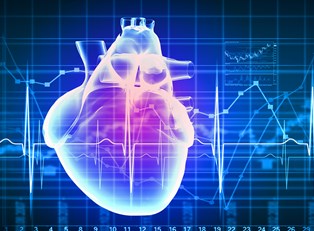Atrial fibrillation is an irregular heart rate that results in poor circulation. In most instances, people with this condition have very rapid heartbeats. During atrial fibrillation, the two upper chambers of the heart beat out of sync with the heart's two lower chambers. Symptoms of the condition include fatigue, shortness of breath and heart palpitations.
People who have atrial fibrillation have episodes that come and go in most cases. However, there are some individuals who suffer from chronic atrial fibrillation. Even though the condition isn't life-threatening, it is serious and will sometimes require emergency medical treatment. Atrial fibrillation can also lead to other health complications. Atrial fibrillation treatments can include medical interventions that will change the electrical system of the heart or medications.
Risk Factors
The older a person is, the greater the chances that he or she will develop atrial fibrillation. People with heart disease, as well as those who have previously had heart surgery or heart attacks, are also more likely to develop atrial fibrillation. People with high blood pressure may have atrial fibrillation later in life as well. Individuals who suffer from conditions such as sleep apnea and an over- or underactive thyroid are also at risk.
For some people, drinking alcohol can cause atrial fibrillation. For men, having five or more drinks in a span of two hours can bring on the condition. Women who have four drinks in two hours may also experience atrial fibrillation. People with a family history of atrial fibrillation or other heart diseases are at risk for atrial fibrillation as well.
Treatments
The treatment choices for atrial fibrillation depend on how long the patient has had the condition, how severe the symptoms are, and any underlying causes of the condition. The goals of treating atrial fibrillation are generally to keep blood clots from forming and to reset and control the heart's rhythm. The strategy that a medical professional will use depends on whether the patient has other heart problems or if it's possible for the patient to take medication for atrial fibrillation. There are some instances in which more intense treatment is necessary. These options include surgery or the use of catheters.
Lifestyle Changes
It may be necessary for individuals with atrial fibrillation to make changes to their lifestyle to prevent further damage to the body, like high blood pressure. Eating foods that are good for the heart, such as whole grains and fresh fruits and vegetables, can prove helpful. It's also wise to reduce sodium in the diet, which will lower blood pressure.
Starting an exercise program and generally increasing physical activity can help keep atrial fibrillation under control as well. It should be noted that exercise should be overseen by a doctor, because physical activity can occasionally trigger atrial fibrillation.
Individuals who smoke should break the habit as soon as possible, and alcoholic beverage should be reduced to no more than one drink a day for women and two drinks per day for men.



